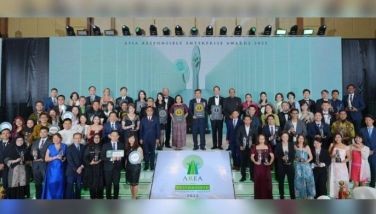EDITORIAL - Lessons from a world war
Not too long ago, Asia’s most prosperous and militarily strongest nation cast its sights outward in search of resources to sustain its rise as a modern power. While supporting allies in the European theater, it embarked on a campaign to expand its empire to its Asian neighbors – without any by-your-leave.
The Greater East Asia Co-Prosperity Sphere sought to create an “Asia for Asiatics” region free of Western powers, united in culture and economy, in Northeast and Southeast Asia as well as Oceania. It proved to be a catastrophic flop for its purveyor, Japan. The effort to create the sphere caused tremendous suffering for Filipinos and other Asians who resisted Japanese aggression.
Atomic bombs that razed Hiroshima and Nagasaki finally brought Japan to its knees. Its emperor announced the surrender and renounced his divinity, and the country renounced war as an instrument of national policy. Japan adopted a uniquely pacifist constitution, which limited its military to a defensive posture. In peace, Japan dramatically prospered, becoming the world’s second largest economy only a few decades after the war, and mending fences with its former enemies.
Today, on the 70th anniversary of the end of World War II, many countries expect an apology from Japanese Prime Minister Shinzo Abe even as the world warily watches his shift to a higher military profile for his country.
There are also inevitable comparisons between the hubris that fueled the Greater East Asia Co-Prosperity Sphere and the current plans for a so-called Silk Road from Northeast to Southeast Asia and all the way to the Indian Ocean, with maritime routes controlled by the purveyor of the idea, China.
The new Asian power has supplanted Japan as the world’s second largest economy and has completed a massive reclamation of reefs a long way from its mainland and within 200 nautical miles from Philippine shores. The artificial islands have been described as unsinkable aircraft carriers, with construction starting on what are expected to be military facilities. The idea that might makes right is back.
The “21st Century Maritime Silk Road” is supported by the financial muscle of the newly created, China-led Asian Infrastructure Investment Bank, from which the Philippines has held back its membership.
Anniversaries of the end of war are supposed to revive lessons on the cost of aggression and the dividends of peace. As recent developments are showing, unfortunately, some lessons are simply hard to learn.
- Latest
- Trending





























